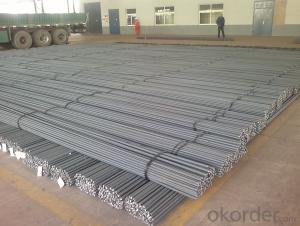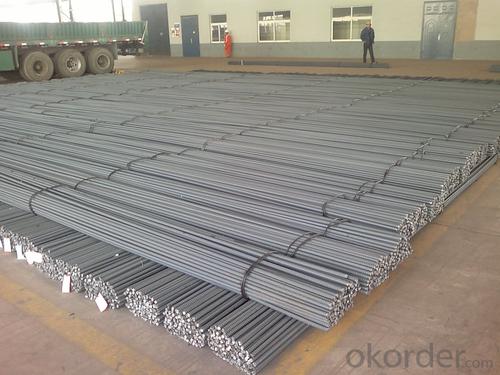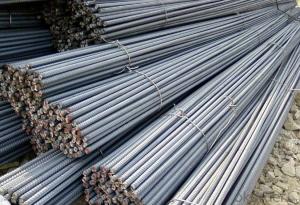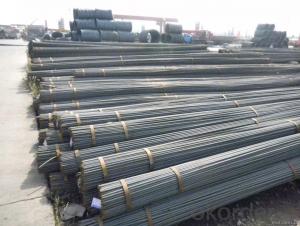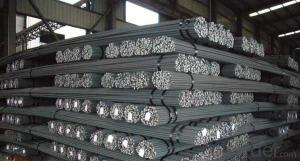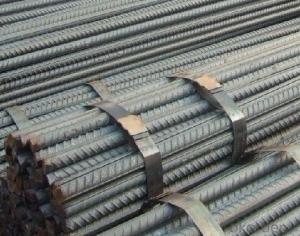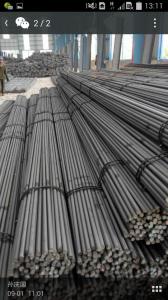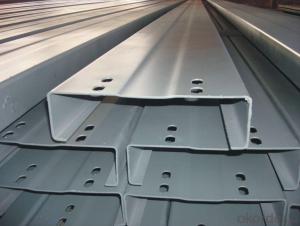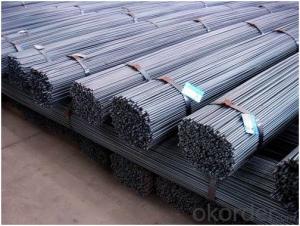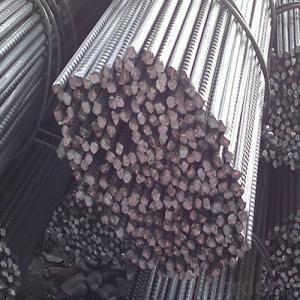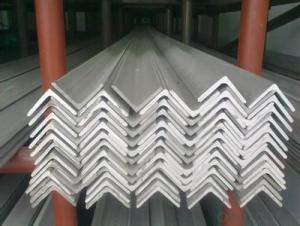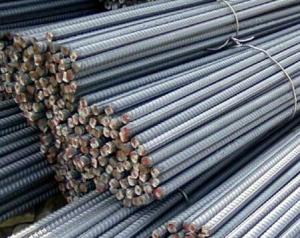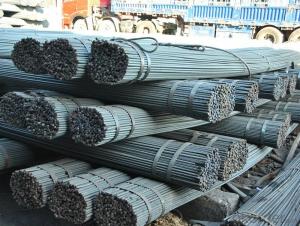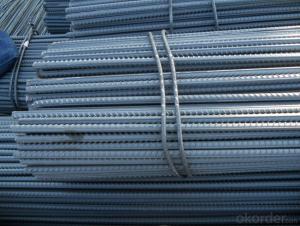Hot Rolled Steel Deformed Bar D-BAR HRB400 HRB500 SD400
- Loading Port:
- Tianjin
- Payment Terms:
- TT OR LC
- Min Order Qty:
- 500 m.t.
- Supply Capability:
- 30000 m.t./month
OKorder Service Pledge
OKorder Financial Service
You Might Also Like
Specification
Product Description:
OKorder is offering Hot Rolled Steel Deformed Bar D-BAR High Qulity HRB400 HRB500 SD400 at great prices with worldwide shipping. Our supplier is a world-class manufacturer of steel, with our products utilized the world over. OKorder annually supplies products to European, North American and Asian markets. We provide quotations within 24 hours of receiving an inquiry and guarantee competitive prices.
Product Applications:
Hot Rolled Steel Deformed Bar D-BAR High Qulity HRB400 HRB500 SD400 are ideal for structural applications and are widely used in the construction of buildings and bridges, and the manufacturing, petrochemical, and transportation industries.
Product Advantages:
OKorder's Hot Rolled Steel Deformed Bar D-BAR High Qulity HRB400 HRB500 SD400 are durable, strong, and resist corrosion.
Main Product Features:
· Premium quality
· Prompt delivery & seaworthy packing (30 days after receiving deposit)
· Corrosion resistance
· Can be recycled and reused
· Mill test certification
· Professional Service
· Competitive pricing
Product Specifications:
Standard | GB | HRB500 | |
Diameter | 6mm,8mm,10mm,12mm,14mm,16mm,18mm,20mm, 22mm,25mm,28mm,32mm,36mm,40mm,50mm | ||
Length | 6M, 9M,12M or as required | ||
Payment term | TT or L/C | ||
Application | mainly used in construction industry to reinforce concrete structures and so on | ||
Quality | First quality, the goods are from Chinese big manufacturers. | ||
Type | Hot rolled deformed steel bar | ||
Brand name | DRAGON | ||
Note:
1. Our products are produced according to national standard (GB), if not, supply according to national standards (GB) or agreement as customer required.
2. Other Grade and Standard Deformed Steel Bar we can supply:
Grade: GR40/GR60, G460B/B500A/B500B/B500C,BST500S
Standard: ASTM, BS, DIN
The Minimum Order Quantity of these products is high, and need to be confirmed.
3. We can not only supply Deformed Steel Bar; if you need anything about building materials, please contact us for further information.
4. Please send us your detail specifications when inquire. We will reply to you as soon as possible. We sincerely hope we can establish a long stable business relationship.
FAQ:
Q1: Why buy Materials & Equipment from OKorder.com?
A1: All products offered byOKorder.com are carefully selected from China's most reliable manufacturing enterprises. Through its ISO certifications, OKorder.com adheres to the highest standards and a commitment to supply chain safety and customer satisfaction.
Q2: How do we guarantee the quality of our products?
A2: We have established an advanced quality management system which conducts strict quality tests at every step, from raw materials to the final product. At the same time, we provide extensive follow-up service assurances as required.
Q3: How soon can we receive the product after purchase?
A3: Within three days of placing an order, we will begin production. The specific shipping date is dependent upon international and government factors, but is typically 7 to 10 workdays.
Q4: What makes stainless steel stainless?
A4: Stainless steel must contain at least 10.5 % chromium. It is this element that reacts with the oxygen in the air to form a complex chrome-oxide surface layer that is invisible but strong enough to prevent further oxygen from "staining" (rusting) the surface. Higher levels of chromium and the addition of other alloying elements such as nickel and molybdenum enhance this surface layer and improve the corrosion resistance of the stainless material.
Q5: Can stainless steel rust?
A5: Stainless does not "rust" as you think of regular steel rusting with a red oxide on the surface that flakes off. If you see red rust it is probably due to some iron particles that have contaminated the surface of the stainless steel and it is these iron particles that are rusting. Look at the source of the rusting and see if you can remove it from the surface.
Images:
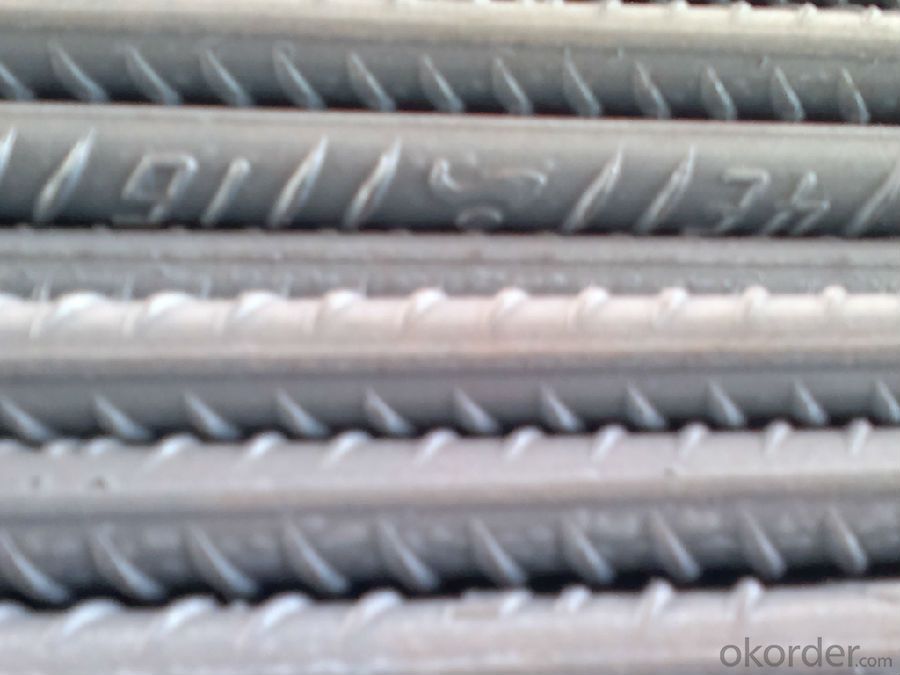
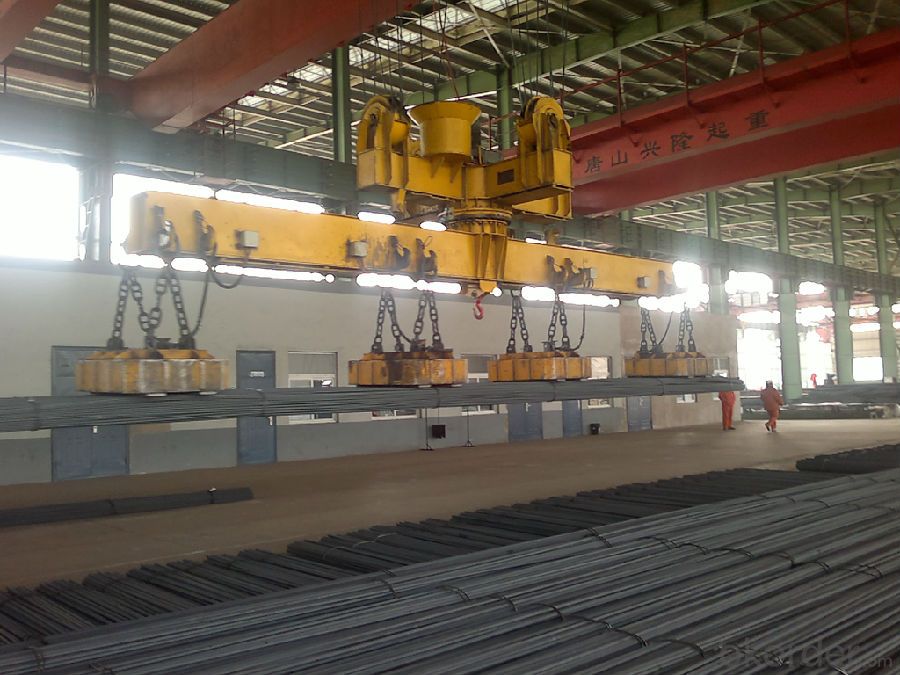
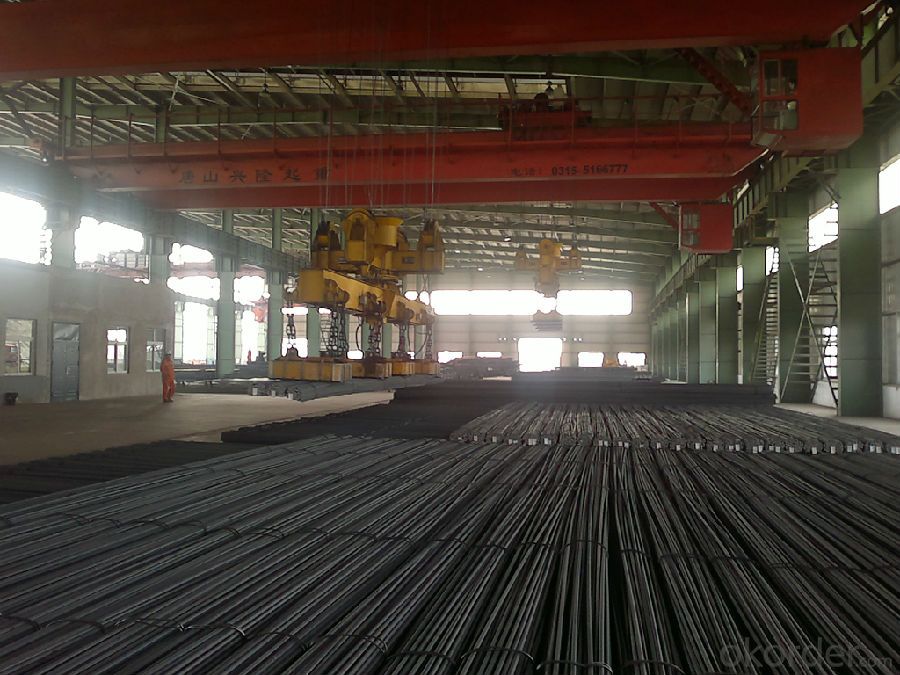
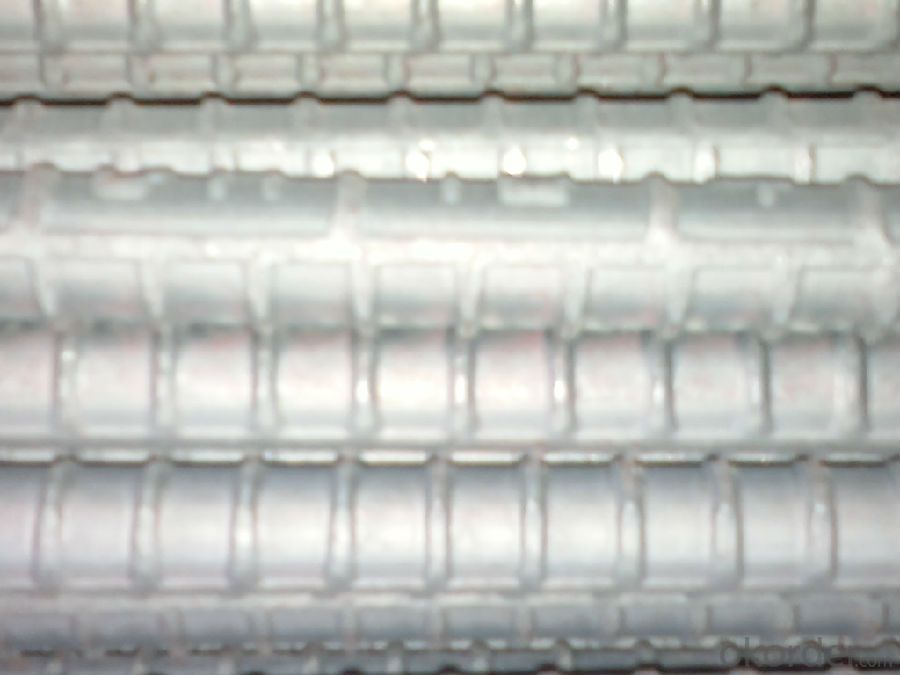
- Q: Are there any limitations on using steel rebars in cold climates?
- Yes, there are limitations on using steel rebars in cold climates. The main limitation is the potential for the steel to become brittle and lose its strength in extremely cold temperatures. This can result in reduced durability and structural integrity of the reinforced concrete. To overcome this limitation, additional measures such as using low-temperature resistant steel or providing proper insulation and heating during construction may be necessary.
- Q: Can steel rebars be used in the construction of residential buildings?
- Steel rebars are indeed suitable for the construction of residential buildings due to their strength and durability. When it comes to reinforced concrete structures, steel rebars are commonly utilized. Within residential construction, their primary purpose is to reinforce concrete foundations, beams, columns, and slabs. This reinforcement provides added support and enhances the structural integrity of the building, allowing it to withstand various loads and forces. Steel rebars are preferred over alternative materials due to their high tensile strength, resistance to corrosion, and ability to withstand extreme weather conditions. Furthermore, they are readily available, cost-effective, and can be customized to meet specific building requirements. Consequently, steel rebars play a vital role in the construction of residential buildings, ensuring their long-lasting stability and safety.
- Q: What are the factors that determine the strength of steel rebars?
- The factors that determine the strength of steel rebars include the chemical composition of the steel, the process of manufacturing and heat treatment, and the diameter and shape of the rebar. Additionally, factors such as the presence of impurities, the level of carbon content, and the microstructure of the steel also play a role in determining its strength.
- Q: Can steel rebars be used in the construction of sports stadiums or arenas?
- Certainly, the utilization of steel rebars in the construction of sports stadiums or arenas is a viable option. These rebars are frequently employed as reinforcement in concrete structures due to their impressive tensile strength and durability. Their suitability for extensive projects, such as sports stadiums, is evident. By providing extra support and stability, the rebars enable the concrete to withstand the immense loads and forces that occur during events in stadiums and arenas. Moreover, the versatility of steel rebars allows for effortless shaping and bending to match the specific design requirements and needs of the structure, making them an adaptable choice in construction endeavors.
- Q: Can steel rebars be used in sound barrier walls?
- Yes, steel rebars can be used in sound barrier walls. Steel rebars are commonly used in the construction of reinforced concrete structures, including sound barrier walls. These rebars provide strength and durability to the walls, ensuring they can withstand the forces exerted on them by wind, weather, and impacts. Additionally, steel rebars help to enhance the structural integrity of the sound barrier walls, making them more resistant to vibrations and noise transmission. Therefore, steel rebars are a suitable and commonly used material in the construction of sound barrier walls.
- Q: How are steel rebars used in industrial buildings?
- Steel rebars are used in industrial buildings to reinforce concrete structures and increase their strength and durability. They are commonly used in beams, columns, and slabs to resist tensile and compressive forces, ensuring the overall stability of the building.
- Q: What are the challenges associated with the installation of steel rebars?
- The installation of steel rebars presents numerous challenges. Firstly, the weight of the rebars can pose a significant obstacle. These heavy structures may require the use of heavy machinery or manual labor to lift and maneuver them into position, potentially endangering workers' safety and demanding additional time and resources for proper installation. Secondly, accurately placing the rebars can be a complex task, particularly in intricate or complicated structures. Achieving precise positioning according to design and structural requirements proves challenging in areas with limited accessibility or congested reinforcement zones. Skilled labor and careful coordination with other trades involved in the construction process are necessary. Another challenge relates to protecting the rebars from corrosion. When exposed to moisture and environmental chemicals, steel rebars are prone to corrosion. Consequently, appropriate measures must be implemented to ensure adequate corrosion protection, such as applying protective coatings or ensuring sufficient concrete cover. This adds complexity to the installation process. Additionally, seamless integration between different construction teams is crucial in rebar installation. Properly integrating the rebars with other structural elements like columns, beams, and walls requires effective communication and collaboration among the design team, steel fabricators, and construction teams. Failure to achieve such coordination may result in conflicts or delays. Furthermore, working at heights or in confined spaces poses additional challenges in terms of safety and accessibility during rebar installation. To mitigate associated risks, it is imperative to implement adequate safety measures, including scaffolding, harnesses, and providing workers with appropriate training. Lastly, the cost of steel rebars can be a challenge, particularly when facing budgetary constraints. As a significant component of the construction process, the cost of rebars may fluctuate due to market conditions or availability. Consequently, project managers must meticulously plan and budget for rebar installation to avoid unexpected cost overruns. In conclusion, the installation of steel rebars presents a multitude of challenges, encompassing the weight of the rebars, accurate placement, corrosion protection, coordination with other trades, working at heights or in confined spaces, and cost considerations. Addressing these challenges necessitates skilled labor, thorough planning, effective communication, and adherence to safety protocols.
- Q: What are steel rebars used for?
- Steel rebars are used in construction to provide strength and reinforcement to concrete structures, such as buildings, bridges, and highways.
- Q: Can steel rebars be used in nuclear power plants?
- Yes, steel rebars can be used in nuclear power plants. However, they need to meet stringent quality control standards and be specifically designed to withstand the demanding conditions and potential exposure to radiation in a nuclear power plant environment.
- Q: Can steel rebars be used in the construction of pedestrian bridges and walkways?
- Yes, steel rebars can be used in the construction of pedestrian bridges and walkways. Steel rebars provide structural support and reinforcement to concrete, making them suitable for such applications. They enhance the strength and durability of the structures, ensuring their ability to withstand heavy loads and foot traffic.
Send your message to us
Hot Rolled Steel Deformed Bar D-BAR HRB400 HRB500 SD400
- Loading Port:
- Tianjin
- Payment Terms:
- TT OR LC
- Min Order Qty:
- 500 m.t.
- Supply Capability:
- 30000 m.t./month
OKorder Service Pledge
OKorder Financial Service
Similar products
Hot products
Hot Searches
Related keywords
